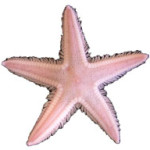
Codium fragile subspecies Tomentosoides
Green sea fingers (Codium fragile) is a pale to dark green algal plant with very bush-like appearance. The branches are 5 – 10 mm in diameter, and rise from a disk shaped pad, known as a holdfast. The holdfast is responsible for keeping the plant securely fastened to rocks on the seabed. As the plant grows, the branches sub-divide into two new branches. It is an annual plant and reproduces during the summer.
Believed to be native to Japan, the sub-species tomentosoides is known locally as dead man’s fingers and is one of the most invasive seaweeds in the world. It is principally sub-tidal in the waters of the region to depths of 15m, but can be found in the inter-tidal zone. Adult plants can grow up to 90 cm in height and when fully established at depth, can develop into bushy ‘meadows’. It is found on hard bottoms, often in the shade of marine walls.When submerged, the branches feel soft and “fuzzy” to the touch due to thepresence of numerous long hairs on the surface of each frond.
The shallow rocky seabed along part of the region’s coast cycles between two types of communities. One is dominated by forests of large kelp; small algae that form as crusts and thin mats over bare rock dominate the other and are referred to as “barrens”. This cycling is controlled by the number and concentration of sea urchins. As sea urchins increase in number along the edges of a kelp bed they graze so intensely that they destroy the whole forest, leaving “barrens” in their wake. A decrease in sea urchin density sets in motion the return of a kelp-dominated community.
This cycle is disrupted if there is an invasion of Codium fragile after a decrease in urchin density. Where kelp is plentiful, the invading seaweed is unable to establish itself, but once it does become established, kelp is not able to re-colonize the area, and the structure and composition of the community changes. Although this indicator can develop into large aggregations, it would be valuable if you can record the number of individual plants.







Social Profiles